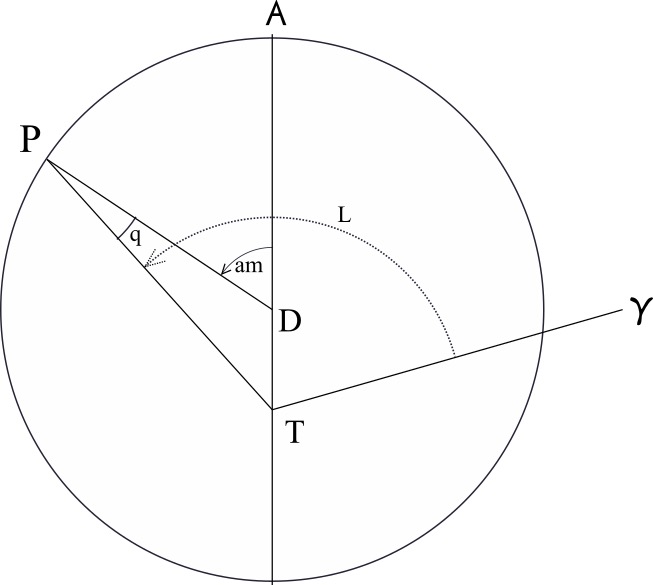Formula definition : Venus total equation double argument | Venus: Total equation double-argument table
Table model definition
Explanation
It is the sum of two equations :
1)The equation of the center, noted q, is the angle between the earth and the equant point, seen from the epicycle centre. The function q depends of Cm, the mean center (medium centrum).
2)The equation of argument, noted p, is the angle between the epicycle center and the planet, seen from the earth. The function p depends of Cm and true argument av.
Therefore we have for the total equation double argument Venus :
\(d= q(Cm)+p(Cm,av)\)
In this way, the true longitude of venus is given by the formula :
\(L=Lm+ q(Cm)+p(Cm,av)\)
with Lm the mean longitude of the sun.
Formula
\(RAD=\frac{\pi}{180} DEG=\frac{1}{RAD}\\
q=-DEG\times arctan(\frac{2esin(RAD\times x)}\\
{sqrt(60^2-(esin(RAD\times x))^2) +ecos(RAD\times x)})\\
rho=\{[sqrt(60^2-(esin(RAD\times x))^2)+ecos(RAD\times x)]^2+(2esin(RAD\times x))^2\}\\
p=\frac{1}{RAD}arctan(\frac{r sin(RAD\times y)}{\rho+r cos(RAD\times y)})\\
f(x,y)=p+q\)
Parameters
| Eccentricity |
e 01 ; 15 |
|||
|---|---|---|---|---|
| Radius of the epicycle |
r 43 ; 10 |
|||
Modern definition
No modern definition
Graphical representation

